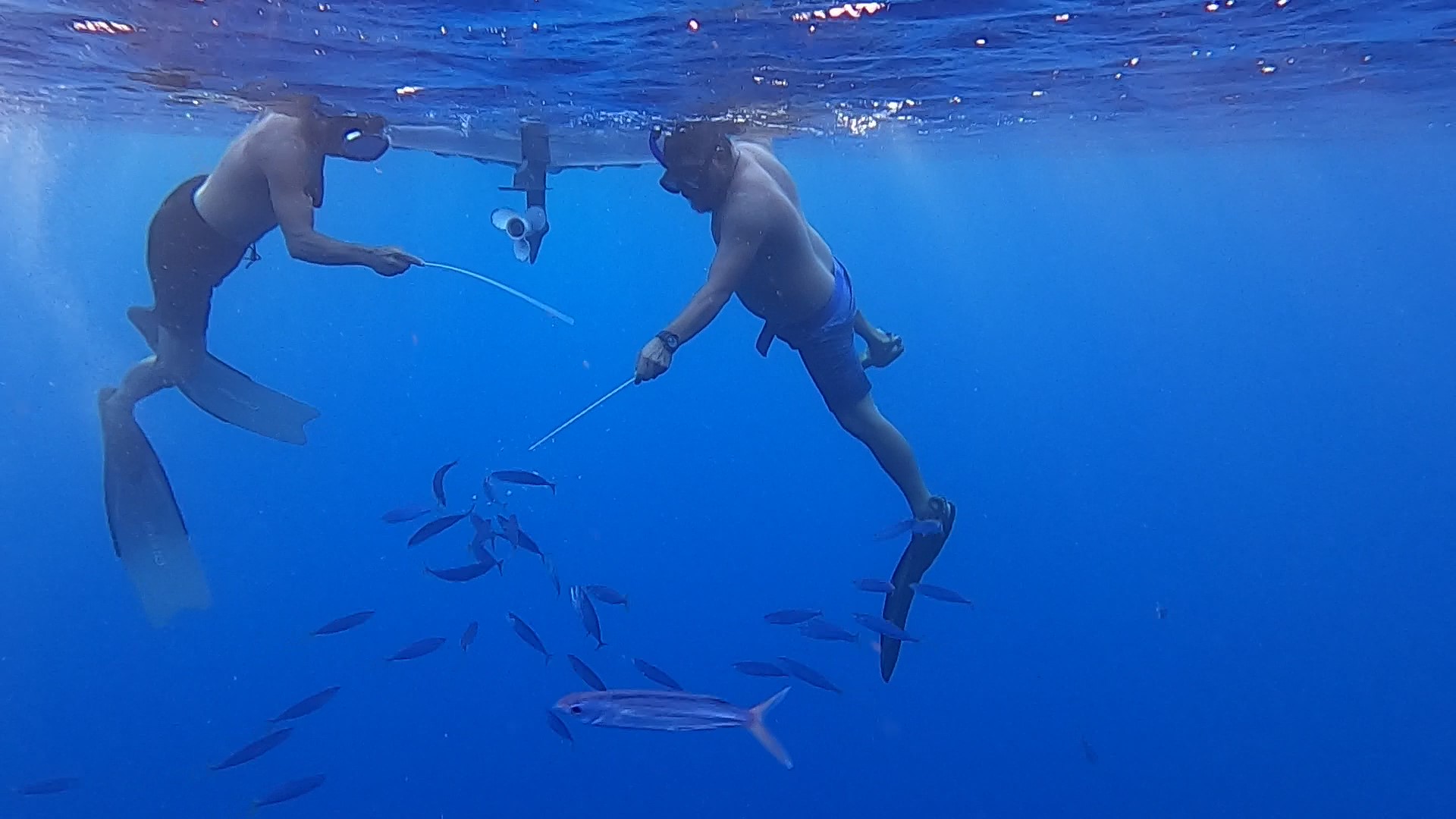Underwater Wizardry in Rakahanga
A special part of the recent northern group vaka tour was being able to experience the local foods, traditions and even some examples of local fishing practices carried out on each of the islands.
Rakahanga is made up of a central lagoon surrounded by a rectangular shaped atoll and outer reef. Its nearest neighbour is Manihiki which is about 44 km away. With a current population of about 65 people, common day to day activities on Rakahanga include keeping the island tidy by removing fallen coconut fronds from the road, the offloading and delivering of cargo when the boat arrives on shore, rito hat weaving and of course fishing!
Fish Aggregation Devices (FADS) are usually available not far from shore for local fisherman to fish for larger pelagic fish like tuna. However one special form of more traditional fishing the vaka crew were able to experience was the skilled technique of the underwater koperu fishing.
Koperu, also known as mackerel scad (Decapterus macarellus) are small fish up to about 30cm long that hang out in schools near islands. They have a global distribution, and are a local favourite in Rakahanga, where they can be found in the waters outside the main passage into the lagoon.
Two or more fishermen, equipped with mask and snorkel, go out just after dark in a small aluminium outboard powered boat. One of the fishermen jumps over the side, dive down as deep as they can go, just above where the koperu are. He then spits out a mouthful of chewed up coconut, streaming it back to the surface. This is done to entice the koperu to swim up from the deeper waters. Once the koperu have reached the surface in good numbers they are continually fed with more chewed coconut to keep them in a feeding frenzy.
Both fishermen are now in the water, holding onto the boat with one hand and with a small fishing rod, with short line and small hook, in the other. One fisherman continues chewing and spitting the coconut at the surface to keep the fish feeding. The hook and line is placed right in the middle of the freshly dispersed coconut bait. With the tug of the hook, a koperu is caught and with a careful flick of the wrist the hooked koperu is thrown in the boat, automatically unhooking its self as it flies through the air. The flick of the wrist is key. Too much flick and your hooked koperu will fly out of the boat, not enough flick, your koperu won’t hook on.
The thin hook and line look transparent to the human eye underwater, so it is virtually impossible for the koperu to distinguish between the coconut bait and the invisible hook.
Observing from underwater, the koperu fishing practice looks like wizardry from a Harry Potter film, with magic wand battles between the two submerged fisherman. The underwater magic battles can go on for a long period of time or until the grated coconut has run out. Around 150 koperu were caught on this particular day, in the space of 90 minutes.
As published in the Cook Islands News 28 August 2021
This style of fishing is helped by a bylaw in Rakahanga, banning nets for the Koperu. This is a sustainable way of mackerel fishing used to feed families and the wider Rakahanga community. A big thank you to Bundy Greig and Mana Ataria Papahu for taking me out fishing!
Check out the underwater koperu fishing in action via our YouTube channel https://youtu.be/c5HadeZ5vXI

